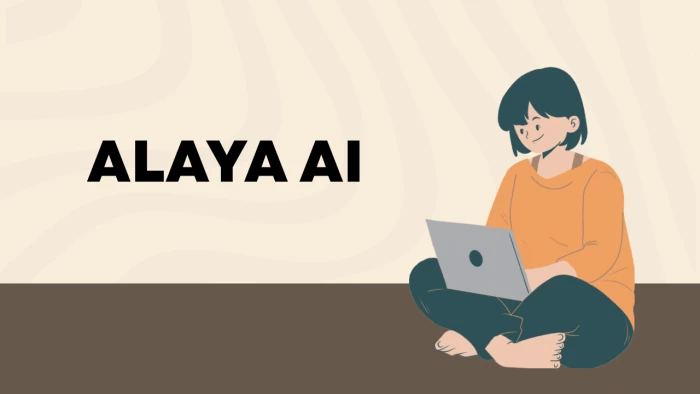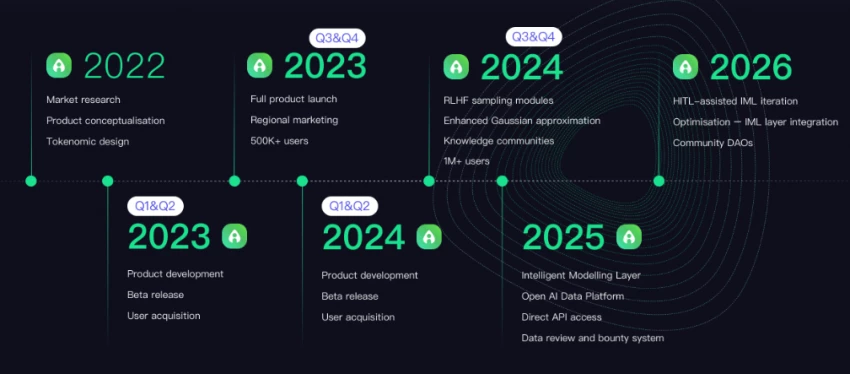

Learn how Alaya AI powers crowd-driven data annotation with token rewards, NFT access, and blockchain transparency. Ideal for startups, Web3 apps, and custom AI datasets.
I’ve explored dozens of data annotation tools over the years. Most are either enterprise-heavy or just glorified labeling platforms. Then I came across Alaya AI, a project that’s radically rethinking the way we generate, validate, and manage training data using blockchain and swarm intelligence.
In this post, I’ll walk through my deep-dive into Alaya AI—its features, use cases, unique tokenomics, and how it fits into today’s evolving AI and Web3 landscape.
At its core, Alaya AI operates as a Web3-native, decentralized platform for crowdsourced data labeling and collection. What makes it different is how it rewards contributors—not with fiat, but with blockchain tokens (ALA/AGT) and NFTs that unlock advanced features.

By combining blockchain, AI auto-labeling, and gamification, Alaya AI creates an economy around data itself—offering users both incentive and ownership over the information they help create.
Alaya AI distributes data tasks globally. Instead of hiring a labeling team, I can push out image, text, or audio tasks to a global user base.
This structure uses swarm intelligence to refine output: multiple users validate the same task, and consensus builds better quality datasets. I’ve seen this work particularly well in sentiment analysis and image segmentation.
The bonus? Each annotation gets logged on-chain, creating an immutable record that’s easy to audit and impossible to tamper with.
When I started using Alaya, I had to set up a Web3 wallet to participate in the full token ecosystem. As a contributor or data buyer, I interact with two main tokens:
These tokens don’t just act as rewards. They unlock features, enable staking, and let users vote in the platform’s DAO—known as POLIS.

This economy isn't just theoretical. NFTs like Medallions act as credentials, showing expertise and granting access to niche data tasks. It’s a smart way to filter experts from casual users.
Most platforms struggle to keep contributors motivated. Alaya solves this by gamifying the experience.
I completed quizzes, earned badges, and leveled up my profile through regular engagement. As I climbed tiers, I unlocked:
This system mimics online games more than traditional data platforms, and that’s exactly why it works. It hooks contributors and keeps them engaged.
Alaya AI isn’t just a proof of concept. I found specific industry applications that make this platform valuable:
Medical image labeling, transcription of health notes, and disease classification models rely on accuracy and privacy. Alaya’s blockchain-backed logs and zero-knowledge encryption check both boxes.
Demand forecasting, sentiment tracking from product reviews, and trend classification are common use cases. Alaya handles multilingual data with ease.
In financial NLP, labeling tweets, financial reports, and customer interactions is data-intensive. With Alaya, I could generate customized corpora using global contributors with finance-specific expertise.
Translators and linguists can annotate native-language data, and token incentives make this cost-efficient. I’ve seen this model scale rapidly for low-resource languages.
I used Appen, Scale AI, and Labelbox before switching to Alaya for a project. Here’s what stood out:
| Feature | Alaya AI | Appen | Scale AI | Labelbox |
| Model | Decentralized | Centralized | Centralized | Internal teams |
| Incentives | Tokens + NFTs | Hourly | Contract | Salaried |
| Gamification | Yes | No | No | No |
| Blockchain Support | Full | None | None | No |
| Custom Dataset Creation | DAO + Task Bidding | Predefined workflows | Enterprise managed | Manual setup |
| Auto-Labeling | RLHF + AI tools | Some | Advanced | Limited |
| Privacy | On-chain + ZK encryption | Policy-based | Enterprise-controlled | None |
I noticed that Alaya AI excels in flexibility, transparency, and cost efficiency, especially for smaller teams that don’t have six-figure budgets.
Traditional labeling workflows are slow. Alaya improves this using RLHF (Reinforcement Learning from Human Feedback).
Instead of labeling every data point from scratch, I could review AI-suggested labels, accept or edit them, and move faster. On average, I completed tasks 3–5x faster.
This blend of machine help and human feedback works great for tasks like:
Medallion NFTs aren’t just collectibles. They define your data identity on the platform. When I earned mine, I could:
This layer creates specialist subcultures—a marketplace for high-quality, niche contributors. I saw medallion holders working exclusively on medical, legal, or highly technical datasets.
That’s something I’ve never seen on Scale or Lionbridge.
Alaya gives both contributors and data buyers a real-time dashboard to track:
This helped me monitor my team’s contributions and see which tasks needed review. I didn’t need to export logs or build a separate tracking system—it was all native.
I won’t sugarcoat this—getting started on Alaya takes some setup:
But once you get over this, the experience is streamlined. Their UI walks you through onboarding, and the mobile app simplifies most of the complexity.
Still, I’d say Alaya is better suited for crypto-native users, Web3 developers, or AI engineers comfortable with token ecosystems.
Alaya doesn’t publish set prices. That’s because pricing depends on token value and task bidding.
Cost depends on ALA/AGT token prices and how you choose to engage (earn vs. buy). For startups or researchers, this model offers more flexibility than paying per hour or per label.
Based on my experience and external reviews, here’s a quick breakdown:
When I first looked into Alaya AI, I expected a niche Web3 experiment. What I found was a serious platform with real utility for teams like mine, especially when working on custom AI models or limited-resource projects.
The blend of community-powered data, token incentives, and AI-driven automation gives me more flexibility than traditional vendors ever could. I didn’t have to rely on slow, expensive outsourcing firms or spend weeks building in-house pipelines.
Sure, the learning curve around crypto wallets and tokenomics took some adjusting. But once I got the hang of it, I realized I could access high-quality, labeled datasets on-demand and at scale, without sacrificing privacy or transparency.
Alaya AI doesn’t just make data labeling faster or cheaper—it reimagines who contributes, how they’re rewarded, and why it matters.
If you're building something that needs smart, secure, and scalable data, this is a platform worth diving into. I’ve already added it to my stack for future NLP and image annotation projects—and I recommend you do too.
Be the first to post comment!